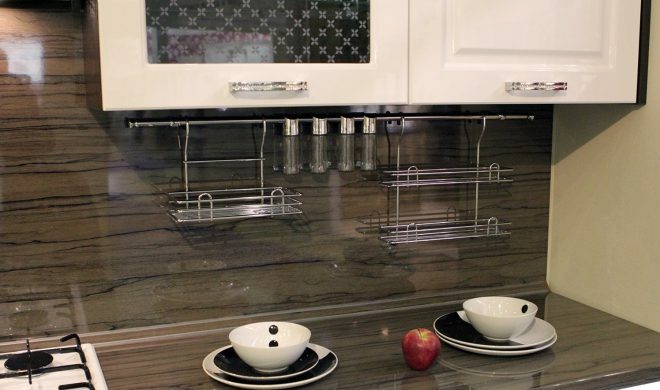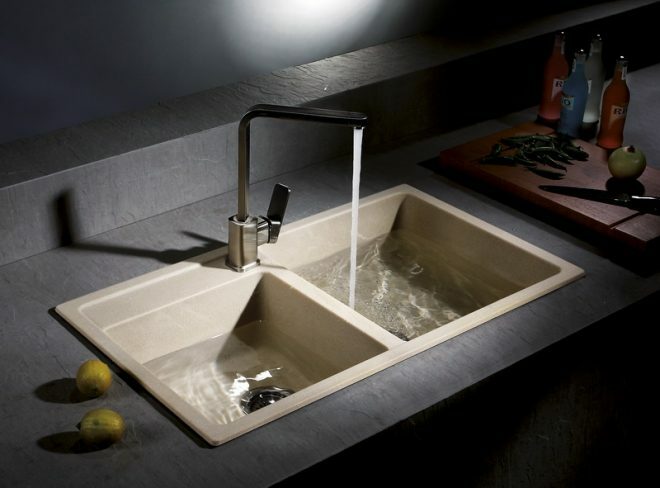Contents
- On the pros and cons of
- What should be the performance?
- Resistance to wear and chemical attack
- Coefficient of friction
- Waterproof and hard
The floor in the hallway is daily exposed to dirt, moisture, sand brought from the street, and sharp heels. In order to keep the coating for a long time tidy, not afraid of moisture, mechanical effects and detergents, its choice is approached very carefully. Despite the abundance of options, is the most popular tile, which, due to its combination of properties, is an ideal covering in the conditions of an hallway, but not every tile will fit perfectly. We study the question far and wide and determine which tile to choose for finishing the floor in the hallway, what operational and decorative qualities it should have.
About the pros and cons
The main properties of the tile thanks to its wide distribution are familiar to many of us. This is the perfect material for the hallway, as it has the following advantages:
- durability .It is worth spending once on the purchase and installation of the coating, and it will serve you for more than a dozen years, subject to the normal care;
- ease of care .Keeping the tile clean is easy, you can use a lot of detergents, and dirt can even be brushed off;
- moisture resistance ;
- wear resistance .Tile uneasy heels, sand, abrasive cleaners;
- hygiene ;
- A wide selection of colors, patterns, formats, so there will be no difficulty with the design of the hallway in a particular color or style.

It is also better to know about the disadvantages of in advance.
- First of all, this is cold material , so you don’t really like barefoot in winter, but you can solve this problem with ordinary slippers.
- Secondly, is characterized by the fragility of : if you drop something heavy, then there is a high probability that the material will be damaged.
If the hallway has an impressive size, the tile floor may impart excessive severity and resemble the lobby of a government institution. There are several ways out of this situation: use a combination of tiles with other finishing materials or turn to warm, cozy colors.

What should be the performance?
Considering the constant effects on the tile in the hallway, it is necessary to select a material with high performance characteristics. It is better to carry out an assessment on such parameters:
- wear resistance;
- chemical resistance;
- friction coefficient;
- waterproof;
- hardness.
Resistance to wear and chemical attack
According to international standards, floor tiles are divided into five classes in terms of wear resistance. Since the material in the hallway is exposed to sand, shoes, and abrasive detergents, it is better to choose tiles belonging to class from PEI- III to PEI- V .Find such material is not difficult.

Tile care products often have a fairly aggressive composition, so the indicator of resistance to chemicals becomes important in choosing. In order not to be limited in the range of effective tools and not to be afraid to damage the tile, it is better to choose a material with an sustainability indicator not lower than B, and a class A or AA tile will have the highest performance.
Friction coefficient
When it is raining outside, moisture on the tile in the hallway is ensured, which inevitably increases the chances of slipping. A similar risk is maintained during wet cleaning. To reduce the risk of injury, you need to pay attention to tiles with friction coefficient of at least 0.75 .

The best choice for a hall is tile with a matte finish or anti-slip surface. It is better if the material has a relief, but the glossy surface is taboo for hallways: it is slippery, and in places of high loads it fades. When choosing a rough tile, it is not necessary to overdo it, otherwise the dirt may accumulate in the grooves: it is difficult to remove it, and the appearance will deteriorate badly. The relief should be shallow, otherwise it is better to choose dark shades, at least for the area near the entrance door.
Waterproof and hard
Of course, tile itself has a low level of moisture absorption, since it burns at high temperatures and is characterized by low porosity. Probably not worth explaining that the water resistance in the case of the hallway should be at the highest level. For private houses this indicator is 3%, for apartments in high-rise buildings it is 6%.
According to the level of hardness for a hall, a tile with indicators is 6-7 points on the Mohs scale .Frost resistance in most cases can be neglected, because if the door is insulated according to all the rules, even near the threshold the tile will not freeze.

As for the , the size of the tile, it should be selected in accordance with the dimensions of the entrance hall itself. A universal option is a square tile with sides of 30 cm. Do not forget about the existence of a mosaic and a tile of non-standard shapes, for example, hexagonal. It should also be borne in mind that the seams are most susceptible to moisture, so if possible, their number should be minimized, but do not get carried away: tiles with sides of 60 cm or more in a small standard hallway are inappropriate.
Ceramic tiles, porcelain tiles or "golden" tiles?
When it comes to tile, it is usually referred to as ceramic tile , since it is most common in today's market. It is made from baked clay, and the result is a beautiful material for decorative and performance qualities. Among the shortcomings, as already mentioned, the fragility and the cold surface. There are some other materials that resulted from the improvement of conventional ceramic tiles.

quartz is resistant to shocks, and the secret lies in the production method. Used for the manufacture of quartz sand, plasticizers, pigments, stabilizers and vinyl. Sand provides naturalness and durability of the coating, and vinyl - flexibility, resistance to impact and wear. Among the colors, mostly natural shades.

The porcelain tile is something between a tile and a stone, and the material combines their advantages, being free from many disadvantages. It is made of clay, crushed granite, feldspar or quartz under high temperature and pressure. The material is painted in mass, and this is an additional plus. The only negative is the high price.

"Golden" tile is an innovation that is rapidly conquering the domestic market. The name does not speak of metallic luster, but of exquisite performance properties. The material is made only in South Korea, and it is a multi-layer construction: compacted PVC, stone granules mixed with resin, fiberglass, patterned film and two protective transparent layers. Therefore, such a tile can imitate any material.

Design
Choosing the color and pattern of the tile, each is repelled by their own tastes and the chosen color scheme of the hallway. Planning repair and considering the design of the room, it is worthwhile to think over in advance what the tile should be. Designers recommend listening to some tips that have already become axioms.
Light tile fits for small hallways , as dark shades visually limit and reduce the space. However, it is better to immediately discard the white and too light shades - they are too easily soiled. Peach, apricot, blue, soft blue, lime, for example, can be safely used. It is worthwhile to take into account that cold shades work better for expansion of space, but warm ones give home comfort. There is a tile that perfectly imitates other materials, such as stone or even wood. The latter option is ideal for creating comfort in the hallway, typical of a wooden floor.


For spacious hallways, you can use tiles of any color, but in too dark shades you should not leave. Remember that on a black, dark brown, dark blue tile and similar scratches will be well visible. An excellent move for small hallways - diagonal laying tiles .You can use contrasting shades and lay them in a checkerboard pattern. The color of the grout depends on the color of the tile, but it is better to choose the darkest option possible - it will be less branded.

Patterns of are also selected based on the design of the hallway, the color of the walls and the ceiling. A win-win is monochrome tile, but the patterned coating in most cases makes the interior more expensive. The choice of patterns on the tile, without exaggeration, is huge. If the hallway is decorated in a classic style, then you can choose marbled tiles, for the interior in modern style, you can use tiles of two colors.



Choosing tiles of the same size, style, but of a different color or with a different ornament is a great option for decorating a hallway. The floor is supposedly sewn from different pieces of fabric. When laying, you can follow a certain order or, on the contrary, use different patterns and colors randomly.


You can use tiles of various sizes and shapes .For example, the central part of the hallway lay out a beautiful panel, edging for which will be a mosaic. In general, the options for different tile layering are mass: you can combine materials as you please, and if you add the existence of hexagonal, triangular and other tile, then it becomes interesting to decorate an entrance hall with an unlimited number.


Combining tiles with other materials
Tiles are perfectly combined with many other finishing materials, includingparquet and laminate flooring. Thanks to such a combination, it is possible to perfectly zone the hallway space, highlighting the area where shoes are removed, and the area where guests are greeted. Moreover, it is a good solution for those who consider tile not enough comfortable material: as a base, you can use a laminate that is less resistant to impacts, and lay out an area at the threshold with tile.
For the owners of long hallways , the combination of two materials becomes actually a necessity, because then the space can be divided into functional zones, and the monotony and severity of the tile can be eliminated.

It is possible to combine tile with a material that is combined in color and style, but clearly differs in appearance. Only then the division of the hallway into zones will be obvious, and the household and guests will see where to go in outdoor shoes is not worth it.

The boundary between the two materials can be flat, diagonal-shaped, or wavy. The last two options are more difficult, since they require careful calculation before cutting materials. Straight and curved lines look beautiful in their own way. To highlight the area near the door, you can even use elevation, but the height of such an mini podium should not exceed 3 cm in order not to cause injuries.

At the end of
Tile is considered to be the ideal option for arranging the floor in the hallway. In addition to excellent performance, the material has a high decorative effect, and the number of possible options for combining tiles, ways of laying it out and combining with other materials allows you to decorate the hallway in an original way. It remains only to turn on the fantasy and do not forget about the operational properties.


